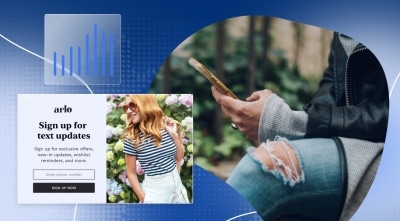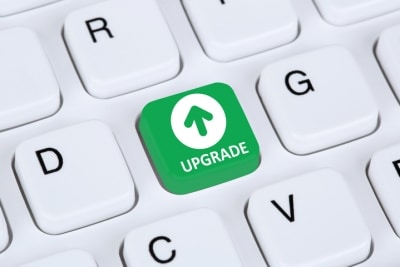Business
3 Technology Trends that are Transforming the Customer Experience
August 31, 2015

To stay ahead of the competition, it’s important for marketing leaders to have an eye on trends that have the potential to accelerate—or disrupt—their business.
At Opticon 2015, Mary Hamilton, Managing Director of Accenture Technology Labs, shared a vision for the future that we’re excited to be a part of, one enhanced by sensors, supported by data, and automated to deliver a personalized, enriched customer experience.

How will these technology trends impact the strategies you use to engage your audience in the next 1-3 years? In this post, we’ll cover the top 3 trends we see impacting marketing and product innovators, and what it means for the next wave of optimization and personalization.
Trend 1: The customer experience becomes a competitive advantage
It’s no secret that personalized customer experiences are the future of digital marketing. But just how far will personalization go?
Today, we may think of a personalized experience as product recommendations, targeted emails, or retargeted advertising campaigns. But in the future, when everything from our cars to our homes are connected, the personalization won’t stop when you turn off your computer. The greater the number of connected devices, the more potential for personalization there are—and the definition of ‘personalized experience’ will also expand.
Accenture is observing a shift in consumer mindset that shows we’re ready for more of these personal experiences. Increasingly, as consumers, we want to engage with businesses in a relationship that’s more than transactional. We want to provide feedback, be inspired, and participate in the lifecycle of a product or service in a meaningful way.
Innovative executives are paying attention: a user-centric, optimized experience is becoming not just a priority, but a competitive advantage. According to Gartner, 89% of executives believe that customer experience will be their primary mode of competition by the end of 2016. Accenture replicated these findings in their own executive survey, where 81% of respondents said that user experience was in their top 5 organizational priorities.
The upside for consumers here is huge—every day, routine experiences have the potential to be optimized for delight: imagine arriving home from your commute to a warm house, an unlocked door, and lights on to welcome you.
Think about your customer experience: how does your customer want to engage with you?
Here’s how you might focus on delivering a more personalized customer experience:
- Tailoring your website or mobile app experience to match the customer’s geography, demographic data, or to acknowledge that they’re a new or returning customer.
- Optimizing an in-store interaction or experience with a customer support rep, allowing the customer to extend their interaction beyond their immediate need or transaction.
- Do you mail products to your customer? Try to optimize your shipping and packaging options to provide a more engaging, tailored experience.
According to Accenture, companies that crack the code for how to manage and scale personalized experiences are going to be in the most profitable long-term position.
Trend 2: Measuring and valuing outcomes over transactions
In our data-driven world where just about everything can be measured, the consumer mindset is also shifting from transactions to outcomes. What does this mean? Customers will care less and less about the ‘thing’ they’re buying, and will increasingly look for the value in the impact of that product or service post-transaction.
This technology trend is driven, according to Accenture, by embedded sensors and the rise of more intelligent hardware. When everything we interact with becomes smarter, we can start measuring results beyond the point of purchase.
In the mostly digital world of SaaS, this trend has already begun: when you can measure the utilization of your product and the value your customers get from it, it’s easy to align your company vision around customer success with your software, rather than just the success of signing a new customer.
But what if this were true for any other product you interact with on a day-to-day basis? What if you only paid for products and services as much as you used them? Imagine only paying for a car as many miles as you drive it, or never deviating from your grocery list again and buying more than you need. In the future, what we pay will be tied to consumption and utilization, instead of the perceived value we see at the moment of purchase.
The more we know about our customers through intelligent hardware and software, the more we can focus on better matching their intent. Here are some examples of how you might incorporate outcome-driven interactions into your customer relationships:
- Focus on customer intent beyond the transaction: If your customer is buying a new piece of clothing, what was their motivation? Is it for a date night, going back to school, or a gift for someone else? Plan to engage the customer to make them successful beyond the transaction.
- How can you better align your price to value: Is there any way to measure your customers’ success with your product or service, and to only charge them for what they actually use?
Trend 3: Reimagining how humans and machines work together
Although we are humans living in a data-enabled world, Accenture sees the symbiotic relationship between humans, machines, and data becoming even stronger and providing more abundant benefits in the future. We’ll collaborate with machines, and get smarter by learning from each other.
Natural language processing (NLP), enabling computers to document human speech and also engage with us in a more natural way is one innovation driving this trend. Machines can also learn from human inputs and apply additional computing power to replicate the way that we think—learning from our example to provide product recommendations, or to take over rote, repeatable processes.
Smart machines are now able to extend the traditional team and human capabilities: imagine having a machine take over the most mundane parts of your work. What if machines could learn how you prefer to do research, then do research for reports for you? With optimization, this is certainly the case—Optimization relies on human intuition and creativity, balanced with programmatic access to data that can prove or disprove those ideas.
We’re moving from “labor-driven, technology-enabled” work to “digital-driven, human-enabled” work. This presents new opportunities and challenges, like figuring out how we’ll plan human and machine collaboration across an entire business, and how we can decentralize decision-making to allow humans and machines to work quickly and effectively together.
What’s next?
You’ve probably already seen manifestations of these trends in your own business—how are you going to take action on them?
Maybe embedded sensors are out of the realm of possibility for your business—but then again, maybe they’re not. How can you push your boundaries, challenge your team, and enable them to create a truly personal, customer-centric experience that drives your business forward?
We’re excited for the future, and for what it means for the customer experience, both in terms of optimizing the relationship between a person and a business and making it more personalized. We have an opportunity and a call-to-action to experiment fearlessly, build upon a strong foundation of data, and to take advantage of both new technologies and a shifting consumer mindset. It’s time to shape the future we all want to live in.
This article was written by Shana Rusonis from Business2Community and was legally licensed through the NewsCred publisher network.![]()
The State of Brand Loyalty in the U.S. in 2023
Related



